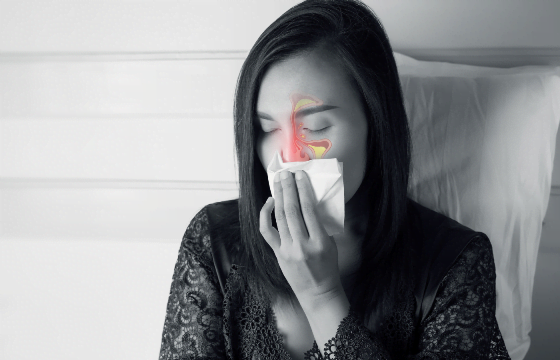
An allergy is your body's immune system reacting to a substance it mistakenly identifies as harmful. These substances, known as allergens, can include pollen, dust, certain foods, insect stings, or even medications. While harmless to most people, allergens trigger an overreaction in sensitive individuals, leading to symptoms ranging from sneezing and itching to more severe reactions like difficulty breathing.
Allergies happen because your immune system misidentifies certain substances as threats. The triggers vary widely, but they typically fall into a few categories:
1. Environmental Allergens
Pollen from trees, grasses, and weeds is a common trigger, especially during specific seasons. This condition, often called hay fever, leads to symptoms such as sneezing and itchy eyes. Dust is another common allergen; tiny dust mites living in household dust can cause respiratory issues and skin irritation. If you’re asking, “How long do dust allergy symptoms last?”, They typically persist as long as exposure continues but can be managed with medication and preventive measures.
2. Food Allergies
Food allergies are caused by an immune reaction to certain proteins in foods such as nuts, shellfish, eggs, or dairy. Symptoms can range from mild itching and stomach upset to severe anaphylaxis. If you’re wondering, “What are the symptoms of food allergies?”, they can include nausea, swelling, hives, and in severe cases, difficulty breathing. These symptoms can last from a few hours to a few days depending on the severity and treatment.
3. Skin Allergens
Skin allergies occur when certain substances come into contact with your skin, leading to redness, itching, and rashes. Common triggers include soaps, detergents, cosmetics, and even fabrics. If you’re dealing with persistent itching and wondering, “What causes skin allergy and itching?”, Allergens like pet dander or specific skin products might be to blame.
Allergy symptoms vary depending on the allergen and how your body reacts to it.
a) For respiratory allergies, symptoms include sneezing, nasal congestion, and watery eyes.
b) Skin allergies often cause redness, swelling, and itching. Severe reactions may lead to blistering or cracked skin.
c) Food allergies can result in gastrointestinal symptoms like nausea, abdominal pain, and diarrhea, along with hives or swelling.
d) Dust allergies often mimic cold symptoms, such as sneezing, itchy throat, and watery eyes. These symptoms can persist until the allergen is removed.
Managing allergies naturally involves taking steps to reduce your exposure to allergens and soothe your symptoms. First, identify your triggers with allergy testing. For example, if dust is the problem, keeping your home clean and using air purifiers can reduce exposure.
Natural remedies, such as saline nasal rinses, can help flush allergens out of your nasal passages, providing relief from respiratory symptoms. For skin allergies, applying aloe vera or using a cold compress can alleviate itching and redness. Strengthening your immune system with a balanced diet rich in fruits, vegetables, and probiotics can also help your body handle allergens better.
While curing dust allergy permanently might not be possible, you can significantly reduce its impact with consistent efforts. Start by cleaning your home frequently and using vacuum cleaners with HEPA filters to capture dust mites. Dust-proof bedding and pillow covers are also effective in minimizing exposure. Allergy testing can help identify specific triggers so that you can take tailored preventive measures. For long-term relief, consider immunotherapy, which involves receiving allergy shots to desensitize your immune system to dust allergens.
Diagnosing allergies is crucial for effective management. Allergy testing is a reliable method for identifying your specific triggers. This may include skin prick tests, where small amounts of allergens are applied to your skin to observe reactions, or blood tests that measure your immune response.
Once your allergens are identified, various treatments can help manage your symptoms. Antihistamines, available as allergy tablets or nasal sprays, are highly effective in relieving sneezing and itching. Decongestants can help clear nasal congestion, while topical creams are ideal for managing skin allergies. For severe allergies, carrying an epinephrine auto-injector is essential.
Preventing allergies requires staying informed and taking proactive measures. For those prone to pollen allergy, monitoring seasonal pollen counts and staying indoors during peak times can help. Regular cleaning, decluttering, and using air purifiers can minimize exposure to dust and other indoor allergens. Consistently consulting with healthcare providers ensures your treatment plan evolves to meet your needs.
Allergies can significantly impact your quality of life, but understanding their causes, symptoms, and treatments can help you take control. Whether you’re seeking answers to “How to cure dust allergy permanently?” or looking for effective allergy medicine, knowledge, and preparation are your best allies.
At Diagnopein we specialize in comprehensive allergy testing to identify your specific triggers and guide you toward effective solutions. Don’t let allergies limit your life—schedule your allergy test today and take the first step toward better health!